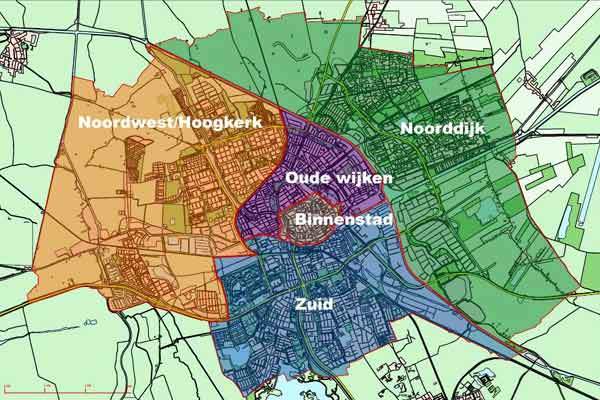The 1.41GW Magnum combined-cycle gas turbine (CCGT) power plant is located at Eemshaven in the Groningen province, the Netherlands.
The gas-fired power plant was previously known as the Nuon Magnum power plant. The name change to Magnum occurred after Vattenfall renamed its Dutch subsidiary Nuon to Vattenfall in October 2018 in a bid to unite its brand across Europe.
Operational since 2013, the Magnum power plant uses natural gas as its main fuel for power generation. It generates enough electricity to meet the demands of two million Dutch households a day.
Ownership details
Vattenfall owns a 100% interest in the power plant. In June 2022, the company reached an agreement to sell the plant to RWE, a multinational energy company, for €500m ($534.51m). The transaction is expected to be completed by the end of September 2022.
The purchase agreement also includes a 5.6MW solar park on the Magnum project site.
A hydrogen conversion project is also being considered, which would convert one of the units to fully run on hydrogen by 2023. It is expected that the plant will run solely on hydrogen by 2030.
Development history
The Magnum power plant was originally planned for development as an integrated gasification combined-cycle (IGCC) plant. The original design was based on the use of varied fuels, such as coal, petroleum and biomass, for power generation.
Construction of the plant was started in 2007 but postponed in May 2008 due to delays in obtaining environmental permits.
The developer subsequently obtained the necessary permits from the authorities and restarted construction in September 2009.
The project development was planned in two phases. Phase I involved the construction of a natural gas-fired combined-cycle power plant, which was to be converted into an IGCC plant during Phase II. Phase II would employ the coal gasification method using syngas derived from coal.
In April 2011, Nuon decided to postpone Phase II due to a rise in raw material prices and pending negotiations with environmentalists. The plan was scrapped altogether in March 2016, due to economic and environmental reasons.
The first unit of the plant was commissioned in 2013.
Plant location and make-up
The power plant is located at the Energy Park Eemshaven, an industrial area dedicated to energy-related businesses.
Eemshaven was chosen as the site for the power plant in July 2006 as it provides cooling water, which is essential for the gasification process. Another reason for the location choice was that the Eemshaven port infrastructure facilities would support the fuel imports required for the power plant.
The plant comprises three 440MW combined-cycle units. Each unit consists of a heat recovery steam generator, gas turbine, steam turbine and generator.
The MHI 701F4 gas turbine in each unit converts natural gas into mechanical power and hot flue gases.
Grid network
As the national grid operator in the Netherlands, TenneT sanctioned the required connection for the Magnum power plant to the 380kV high-voltage grid in 2007.
Nuon entered the contract with TenneT in January 2007. TenneT’s grid manager completed the 380kV station in 2009.
Since the Dutch grid could not support the new electricity production of 1,200MW at Nuon’s plant, TenneT provided the required transmission facility.
Groningen Seaports and TenneT helped Nuon finalise the 4km route for the high-voltage overground connection, which comprised two circuits. The route connects the 380kV TenneT station to the one at the Magnum plant.
In May 2016, Tennet was also appointed to implement a black start facility at the power plant. The black start facility serves as a recovery facility to ensure the restoration of power to the high-voltage grid in a black-out situation. It includes a gas turbine generator, diesel generator and one of the three combined-cycle units of the project.
Conversion into a hydrogen-based plant
Nuon, Gasunie and Equinor (formerly Statoil) signed a memorandum of understanding to explore the opportunity of converting the project into a hydrogen-based, carbon-free power plant in July 2017. The hydrogen conversion project is expected to reduce carbon dioxide (CO₂) emissions by up to four million tonnes a year.
Mitsubisi Hitachi Power Systems (MHPS) was engaged to support the hydrogen conversion project in March 2018. The contractual scope includes studying the technical feasibility of using hydrogen as the fuel for the plant.
Gasunie was selected to undertake research related to the transportation and storage of hydrogen, while Equinor was engaged to convert natural gas into hydrogen and CO₂.
Combined energy storage and hydrogen facility
Battolyser, a joint venture of Delft University of Technology and Proton Ventures, intends to establish a combined energy storage and hydrogen production facility at the power plant.
It received a grant worth €480,000 ($566,996) from the Waddenfonds foundation for the construction of a pilot energy storage and hydrogen production facility in June 2018.
Battolyser planned to install the first 15kW/15kWh at the project power plant in 2021. It will act as a battery to store or supply electricity and use an electrolysis process to convert water into hydrogen and oxygen.
Contractors
Nuon awarded a €1bn ($1.48bn) contract to the Mitsubishi Group for the construction of the gas-fired part of the power plant in February 2008.
As the main contractor, Mitsubishi managed the entire project and engaged subcontractors to execute the project. The subcontractors included Ballast Nedam, NEM, ABB and Fabricom, Irem, Pontecelli (FIP).
Ballast Nedam conducted civil works and NEM was engaged in the construction of the boilers. FIP was involved in the mechanical construction, while ABB performed high-voltage electrical installations.
convex ZT, an Austrian company, was contracted for the civil design works for the project.







